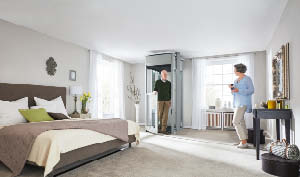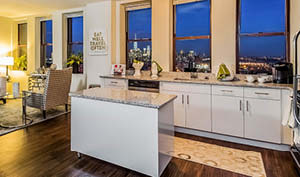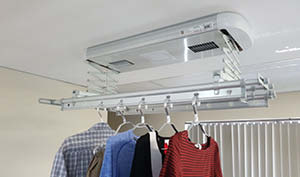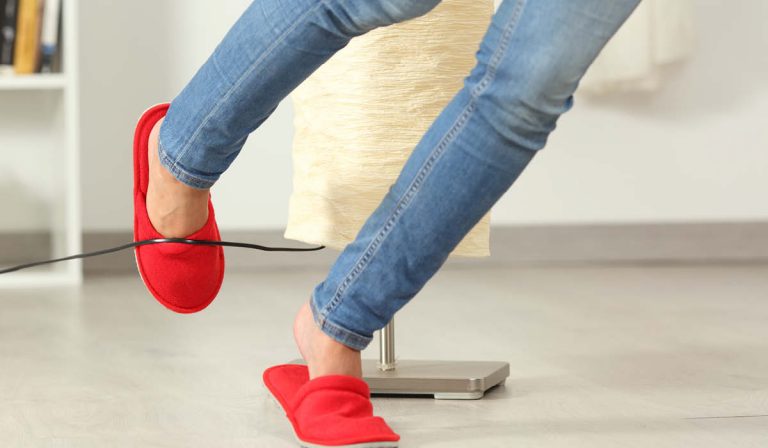Home renovations often centre on upgrading the bathroom cabinets, selecting a new paint colour for the bedroom or visiting kitchen showrooms in Melbourne for those looking to do a complete remodel. But as long as you are at it, a well-thought-out redesign might also include modifications to help you stay in your home as you grow older.
These alterations can start with simple things, like installing a grab bar in the bathroom or replacing doorknobs with lever handles. But if your budget allows for an entire kitchen or bathroom overhaul, it’s best to think about how you physically may change in the years to come and plan accordingly.
These renovations are all about maintaining independence, so if you have back pain now, then it’s smart to think about getting pull-out shelves to minimize bending.
Something as simple and cost-effective as installing a grab bar can prevent debilitating falls and literally save lives.
Surveys show that 85 percent of older Australians want to stay in their current homen rather than move elsewhere.

Throughout the Home
Opt for mechanisms that are easier to operate when mobility is impaired. For example, choose door levers over doorknobs. Light switches with a rocker panel are preferable to a toggle switch. Awning-type window units are the easiest to open and close.
Consider how technology-powered devices can facilitate aging in place. Mechanisms like front door locks, lighting, or thermostats that you can control with a smartphone can be easier to operate in advanced age. Though when exploring these options, consider maintenance requirements, the risks associated with malfunctions, and whether they can be operated on a device with a larger screen, like a tablet. Icons can be difficult for the visually impaired to navigate on a smartphone screen.
Wainscoting (decorative panelling), chair rails, or shelves that protrude from the wall can aid balance, as long as they are thick enough to grip and securely attached to the wall.
To reduce glare and shadows, which create trip hazards for seniors with faultier depth perception, install indirect lighting. To reduce how often you’ll need to change light bulbs, install LED fixtures. Two-way switches are recommended. They are particularly useful in bedrooms, so you can turn the light on upon entering through the doorway and turn it off from the bedside.
In addition, window treatments/curtains can be installed with a remote-control device so shades don’t have to be raised and lowered or pulled side to side, which can add strain.
Install electrical outlets at 18-to-24 inches off the ground, to reduce how far you’ll have to bend down to access them.
If you live in a multi-level home, locate the master bedroom on the ground level, and include a bathroom on each floor. Or consider a domestic lift which can help make life easier when the stairs become more challenging and it is an ideal alternative to a stairlift. Home elevators provide a more convenient – and faster – way of getting upstairs which can improve your lifestyle. Domestic lifts are also great for carrying heavy objects.
Flooring
Opt for soft and smooth surfaces, like cork, rubber, and linoleum. These softer surfaces will be kinder to joints but won’t pose a trip hazard, like high-pile or excessively padded carpets can.
Keep flooring smooth and level, to the extent you can. Where level changes are unavoidable, signal them with a change in material, texture, or colour, but avoid strong patterns or shiny surfaces that may interfere with depth perception.
Just be a little bit conscious of how level changes will impact someone with impaired vision who is more susceptible to tripping. If you have a threshold in your house, you know what’s a really quick and cheap fix? Grab a can of paint and paint it in a different colour.

In the Kitchen
Include a surface where you can sit to prepare meals. Standing for long periods of time may become more onerous as you age.
Consider an island on wheels, so that the position could be adjusted to provide clearance for a walker or wheelchair.
Cabinets should have easy to operate levers rather than knobs and the majority should be placed under the counter.
If eyesight is poor, contrasting colours or materials can help someone differentiate different zones.
Opt for drawers under your countertop, in place of lower cabinets. D-type pulls are the easiest to grip when opening and closing cabinets.
If hearing is poor, flashing lights on appliances rather than bells can alert someone that dinner’s ready.
In the Bathroom
An adjustable-height showerhead with a handheld wand can extend your ability to bathe independently, an activity that can have a demonstrable impact on preserving emotional wellbeing and sense of dignity.
If you’re building a new shower, choose a no-threshold or walk-in shower and consider incorporating a seat into the design. If you’re renovating an existing shower, base-row wall tiles that contrast with the floor tiles can help you distinguish between wall and floor more readily.
If you have a bathtub and shower combo, a shower curtain is preferable to sliding shower doors. Shower door tracks should not be installed on the bathtub rim.
Standard towel bars are not designed to support body weight, but many manufacturers do offer grab bars specifically designed to replicate the appearance of a tower bar and aid mobility.
Grab bars to grasp whether using a toilet or getting into and out of a shower are essential and designs today look sculptural. If homeowners aren’t yet ready to incorporate this feature, they can have blocking installed behind walls, which will cut the expense later.
A comfort-height toilet model should be selected that’s 2″ higher than normal and easier to transfer onto from a wheelchair; a wall-flush valve makes flushing easier.

Laundry Room Equipment
Front-loading appliances are easier to reach than top-loading models.
Costs of Aging in Place Modifications
While some developers, builders, architects, designers, and even homeowners have resisted incorporating universal design from fear that it will increase costs, most in the field say the expenses are fairly small, compared with overall housing costs and paybacks.
Many seniors prefer to live in familiar surroundings as they grow older. Completing a home renovation — with an eye toward elder care needs — can help seniors maintain independence while enjoying the comforts of home.
Are home modifications subsidised?
Some home modifications are eligible for financial support through a range of federal, state and territory government-funded initiatives. Some of the subsidies available include:
- For people aged 65 years and over. You or your carer can apply for a home modification subsidy via the My Aged Careweb portal. There are two options available:
- Commonwealth Home Support Programme.This programme provides entry-level home support to older Australians to help them stay independent in their home and community for longer. Subsidised home modification services include the minor installation of safety aids such as alarms, ramps and handrails.
- Home Care Packages.Designed for older Australians with more complex care needs, this option offers a range of subsidised home modifications as part of a larger package of support services.
- For children and people under 65 years of age.The National Disability Insurance Scheme offers funding for the design and construction of home modifications as part of a package tailored to each patient’s care needs.
- For veterans. The Rehabilitation Appliances Program offers funding for eligible veterans based on their clinical needs.
NSW: Home Modifications Australia (MOD.A). This group is the national peak and industry body that represents providers and promotes the benefits of home modifications for the elderly and differently abled.
Phone: (02) 9281 2680




